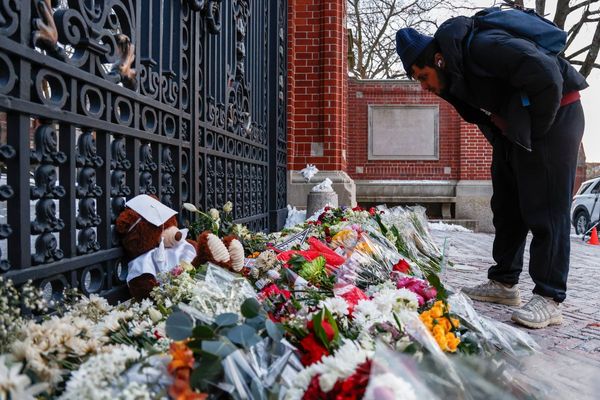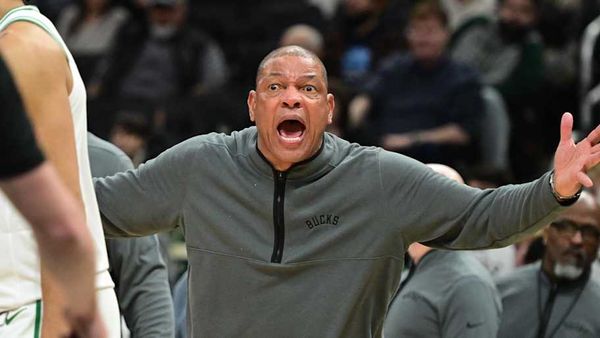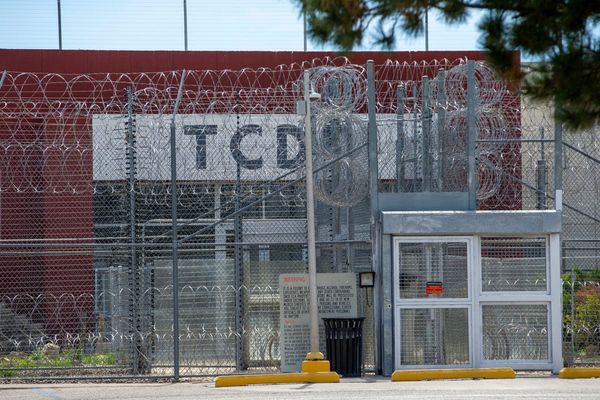
It’s a strange time for the US economy. Prices are rising, jobs growth has stalled, uncertainty is everywhere and stock markets have soared to record highs. Against this background a scary word last used in the 1970s is being uttered again: stagflation.
Stagflation is the term that describes “stagnant” growth combined with “inflation” of prices. It means that companies are producing and hiring less, but prices are still going up. It’s a scenario that some economists say can be worse than a recession.
The last time the US saw a period of prolonged stagflation was in the 1970s during the oil shock crisis. Higher oil prices caused inflation to rise, while unemployment rose as consumers cut back on spending.
For now, the US economy isn’t experiencing stagflation, but recent data has shown it is edging closer to it.
After Donald Trump’s tariffs were announced in the spring, official data initially suggested the economy was shaking them off. New jobs were being added to the economy at a stable pace, while inflation went down to 2.3% – the lowest it had been since 2021.
However, when new labor market data was released in August, it became clear that there had been an impact on hiring that had been slow to appear in the data. Initial job figures for May and June were revised down by 258,000. While figures in July and August were slightly stronger, it was still a marked drop compared with earlier in the year.
Meanwhile, inflation started crawling back up in April. In August, the annualized inflation rate hit 2.9%, the highest since January.
Brett House, an economist at Columbia Business School, said that surveys of economists showed expectations of a recession for the year ahead was at a three-year low in January. Growth was expected to remain solid, and inflation was expected to continue easing.
“Both of those expectations have been turned around by the set of policies and their erratic implementation,” House said. “We’ve seen growth forecasts for the remainder of this year cut substantially, and we have seen inflation forecasts pushed up.”
In other words, the economy has both become more stagnant and inflationary – stagflation.
Economists are pointing to two policies coming out of the White House that are pushing the economy closer toward stagflation.
Trump’s crackdown on immigration has cut down the number of available workers and also increased the cost of hiring. And when it comes to prices, tariffs have just started to have a noticeable impact as companies pass tariff costs on to consumers.
Investors are banking on hopes the Federal Reserve cutting interest rates next week, but the future of the US economy remains uncertain.
In his closely watched speech at the Fed’s Jackson Hole symposium last month, the Fed chair, Jerome Powell, outlined the “shifting balance of risks” that have appeared over the summer.
“While the labor market appears to be in balance, it is a curious kind of balance that results from a marked slowing in both the supply of and demand for workers,” Powell said. Meanwhile, “higher tariffs have begun to push up prices in some categories of goods.”
Stagflation weakens the Fed’s ability to balance the economy. Adjusting interest rates can help balance out unemployment and inflation, but only if one is rising. When inflation surged to 9.1% in summer 2022, raising interest rates helped bring prices down. Inflation went down to below 2.5%, but the unemployment rate went up in the meanwhile, from a low of 3.4% in 2023 to 4.3% this past August.
The Fed actually has more power during a recession, which economists broadly define as a period of slowed economic activity. When Covid lockdowns caused a recession, with massive unemployment, in 2020, the Fed lowered interest rates down to near zero to stimulate the economy.
Because we’re not seeing stagflation yet, the Fed moving rates down next week could help the labor market without causing prices to soar. But the move comes with uncertainty.
“Say stagflation is happening, but at a very slow pace, because firms are waiting to pass through [the cost of tariffs],” said Sebnem Kalemli-Ozcan, an economist at Brown University. “Firms are going to start seeing demand increase and say: ‘Oh, now I can pass through my higher costs on to more consumers.’ … Then we are going to see inflation.”
One analysis from Goldman Sachs said that US consumers had already absorbed 22% of the cost of tariffs, and that they could eventually take on 67% if current tariffs continue.
If prices continue to rise, and the labor market continues to slow, stagflation will get stronger.
“If [stagflation] happens, it’s a very depressive situation because people are going to lose their jobs, unemployment is going to increase and people who are looking for jobs are going to have a very hard time finding jobs. That’s going to be the hard part,” Kalemli-Ozcan said.
The Yale Budget Lab estimated that Trump’s tariffs could increase the number of Americans living in poverty by at least 650,000 as tariffs become what the lab calls an “indirect tax”.
The Trump administration has urged Americans to be patient with the impacts of the tariffs and has claimed that recent economic data has been “rigged” against the president.
“The real numbers that I’m talking about are going to be whatever it is, but will be in a year from now,” Trump said earlier this month. “You’re going to see job numbers like our country has never seen.”







